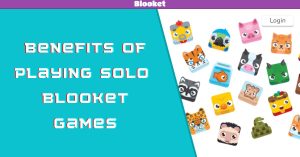Blooket offers a unique way to review and test knowledge. However, one challenge many users face is creating question sets quickly. Manually inputting questions can be time-consuming. But did you know that you can speed up this process by using spreadsheet imports?
This guide will show you how to create Blooket question sets fast with the spreadsheet import feature. We’ll walk you through the steps, offer tips for organizing your data, and ensure you can make the most of this powerful tool. Let’s dive in!
About Blooket Question Sets
Blooket combines the thrill of games with the learning potential of quizzes. It allows educators to create custom question sets that students can answer in a game-based format. With different game modes like “Tower Defense” and “Battle Royale,” students can engage in exciting competitions while reviewing their lessons.
Not only does Blooket make learning more enjoyable, but it also provides valuable data for teachers. They can track student progress, see which questions were most challenging, and use this information to tailor future lessons.
Creating question sets is at the heart of Blooket’s functionality. The quicker you can generate these sets, the more time you have to focus on the fun part: playing the games! This is where the spreadsheet import feature comes in handy.
Why Use Spreadsheet Import?
Entering questions one by one into Blooket can take a lot of time, especially if you have many questions. Imagine having to type out each question and its answer options. It’s repetitive and can lead to mistakes.
With the spreadsheet import feature, you can prepare your questions and answers in a spreadsheet program like Google Sheets or Microsoft Excel. Once your spreadsheet is ready, you can upload it to Blooket, and the platform will create the question set for you. This method is faster, more accurate, and allows for bulk question uploads.
How to Create a Spreadsheet for Blooket
Creating a spreadsheet for Blooket is easy. Follow these steps to ensure your spreadsheet is formatted correctly:
- Open Your Spreadsheet Program: You can use any program you’re comfortable with, such as Google Sheets or Excel.
- Set Up Your Columns: The first row in your spreadsheet should contain the headers: “Question,” “Correct Answer,” “Incorrect Answer 1,” “Incorrect Answer 2,” and “Incorrect Answer 3.” These columns tell Blooket where to find the necessary information for each question.
- Enter Your Questions and Answers: Start filling in your questions and answers under the appropriate columns. Each row represents a different question set. Be sure to check for spelling errors and make sure each answer is relevant to the question.
- Save Your Spreadsheet: Once you’ve entered all your questions and answers, save your spreadsheet as a .csv (Comma Separated Values) file. This file format is compatible with Blooket’s import feature.
Let’s break down an example:
| Question | Correct Answer | Incorrect Answer 1 | Incorrect Answer 2 | Incorrect Answer 3 |
|---|---|---|---|---|
| What is 2+2? | 4 | 3 | 5 | 6 |
| What is the capital of France? | Paris | London | Rome | Madrid |
| Who wrote “Hamlet”? | William Shakespeare | Charles Dickens | J.K. Rowling | Mark Twain |
In this table, each row after the headers contains a question and its corresponding answers. The “Correct Answer” column holds the right answer, while the “Incorrect Answer” columns hold the wrong options.
Importing Your Spreadsheet into Blooket
Now that your spreadsheet is ready, it’s time to import it into Blooket. Here’s how to do it:
- Log into Blooket: Go to the Blooket website and log into your account. If you don’t have an account yet, you’ll need to sign up for one.
- Navigate to the “Create” Section: Once logged in, click on the “Create” button at the top of the page. This will take you to the question set creation page.
- Select “Import from Spreadsheet”: On the creation page, you’ll see an option to “Import from Spreadsheet.” Click on this option to proceed.
- Upload Your .csv File: A window will pop up asking you to upload your .csv file. Click the “Upload” button, find your saved .csv file on your computer, and select it.
- Review Your Questions: After uploading, Blooket will show you a preview of your questions. This is your chance to check that everything has imported correctly. If you see any errors, you can go back to your spreadsheet, fix them, and re-upload the file.
- Save Your Question Set: Once you’re happy with your questions, click the “Save” button. Your question set is now ready to use in Blooket games!
Tips for Creating Effective Question Sets
Creating question sets that are both engaging and educational is key to getting the most out of Blooket. Here are some tips to help you create effective question sets:
- Mix It Up: Include a variety of question types. Mix simple factual questions with more complex ones that require critical thinking. This keeps the game interesting and challenging.
- Use Images: Blooket allows you to add images to your questions. Use this feature to make your questions more engaging. For example, you can use a picture of a famous landmark in a geography question or a diagram in a science question.
- Keep It Clear: Make sure your questions and answers are easy to understand. Avoid overly complex wording or jargon that might confuse players.
- Stay Relevant: Tailor your questions to the topic you’re teaching. This ensures that the game is a valuable learning tool and not just a fun distraction.
- Test Your Questions: Before using your question set in a live game, test it out to make sure everything works as expected. Check for typos, formatting issues, or anything else that might affect gameplay.
Advanced Tips for Using Spreadsheet Imports
Once you’re comfortable with the basics of spreadsheet imports, you can start exploring more advanced techniques to enhance your question sets. Here are a few ideas:
- Batch Editing: If you need to make changes to multiple questions at once, you can do this easily in your spreadsheet before uploading it to Blooket. This is much faster than editing each question individually on the Blooket platform.
- Using Formulas: Spreadsheet programs like Excel have powerful formula features that can save you time. For example, you can use formulas to generate questions based on patterns, such as math problems or quiz questions that follow a specific format.
- Organize by Topics: If you’re creating question sets on different topics, you can organize them into separate sheets within the same spreadsheet file. This makes it easy to keep track of your questions and ensures you’re uploading the right set to Blooket.
- Collaborate with Others: If you’re working with a team of teachers or students, you can use shared spreadsheets to collaborate on question sets. Google Sheets, for example, allows multiple people to edit the same document simultaneously.
- Bulk Upload Images: If your questions include images, you can save time by uploading these images in bulk to a cloud service like Google Drive or Dropbox and then linking to them in your spreadsheet. Just include the URL of the image in the appropriate column in your spreadsheet.
Conclusion
Using the spreadsheet import feature to create Blooket question sets is a game-changer. It saves time, reduces errors, and allows for more creative and engaging question sets. Whether you’re a teacher looking to make learning more fun or a student wanting to challenge your friends, Blooket’s spreadsheet import feature can help you achieve your goals quickly and efficiently.
By following the steps outlined in this guide, you’ll be able to create Blooket question sets fast and with ease. Remember to keep your questions clear, mix up the types of questions you include, and test your sets before using them in a game. With a bit of practice, you’ll be a Blooket question set pro in no time!




